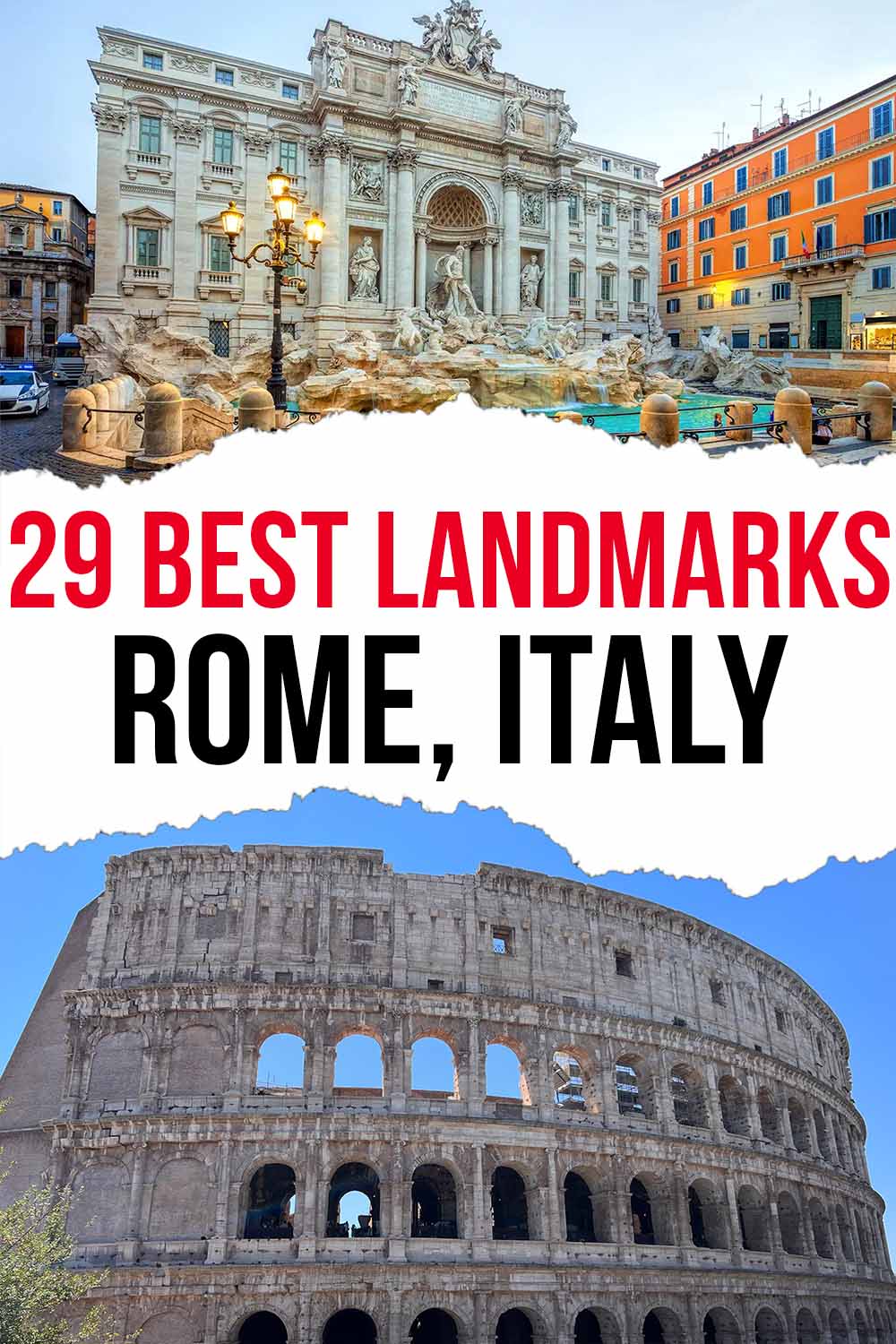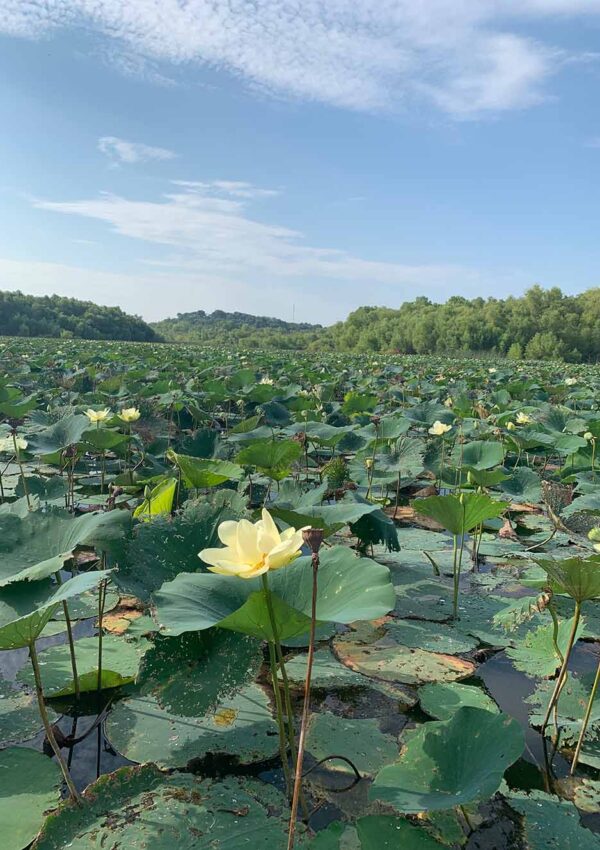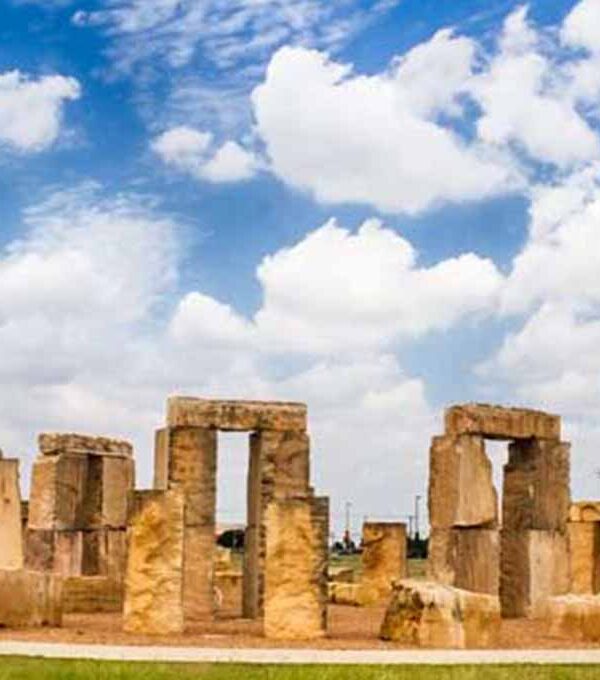Rome, known as the Eternal City, is the place to visit when in Italy. With its beauty, history, architecture, cobblestone streets, and outdoor cafes, Rome offers something for everyone.
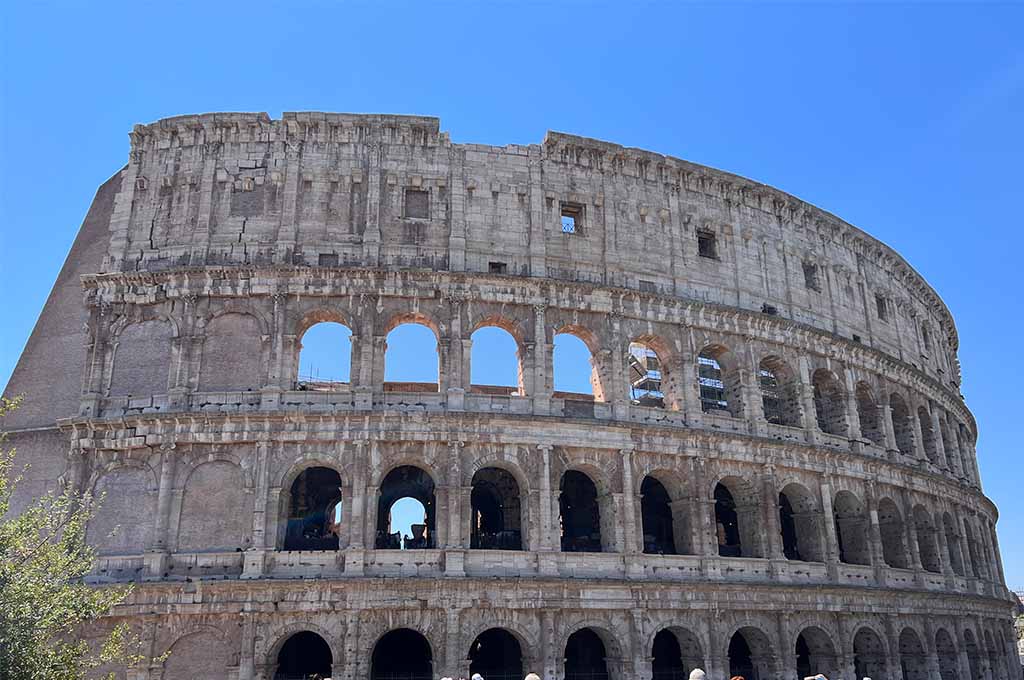
These ancient Roman sites range from popular tourist destinations to hidden gems around the city that are often overlooked by tourists. All are worth visiting!
Dating back to 753 when Rome was founded until the collapse of the Roman Empire in the 5th century AD, the city had a major influence in the world.
The culture and the city are fascinating. With so many of the landmarks and historical monuments still standing today, takes you back in time when Rome world the world. Once you explore the sites, you’ll understand why it’s called the Eternal City.
READ NEXT: Best things to do in Capri Italy
Whether you booked a guided tour of the city or explore on your own, these are the most popular and unique landmarks in Rome that you don’t want to miss.
Below you will find the best ancient Roman landmarks to visit while in Rome, Italy.
Best Roman Landmarks
Appian Way
If only all the other highways were built like this! This was Rome’s gateway to the Easy and was built in 312.
There are about 10 miles that are preserved where guests can walk or bike along the road. Along the road are multiple tombs and catacombs.
Arch of Constantine
Built-in 315, this structure is 70 feet high and the concrete is faced in marble.
Constantine was the emperor who decriminalized Christianity and the arch celebrates his victory at the Battle of Milvian Bridge in AD 312, which made him the sole ruler of the Roman Empire.

Arch of Titus
Located on the Via Sacra in Rome, the monument stands just southeast of the Roman Forum.
The arch contains panels that depict the triumphal procession celebrated in 71 AD after the Roman victory culminating in the fall of Jerusalem.
Aqua Marcia
This is one of the longest of the eleven aqueducts in Rome. It was 56 miles long and fed from springs located in the town of Morano. It’s a great place that takes you back to ancient Rome.
Aurelian Walls
Constructed to protect the city against attacks, was built between 271 AD and 275 AD. About two-thirds of the city walls remain and can walk alongside the walls throughout the city.
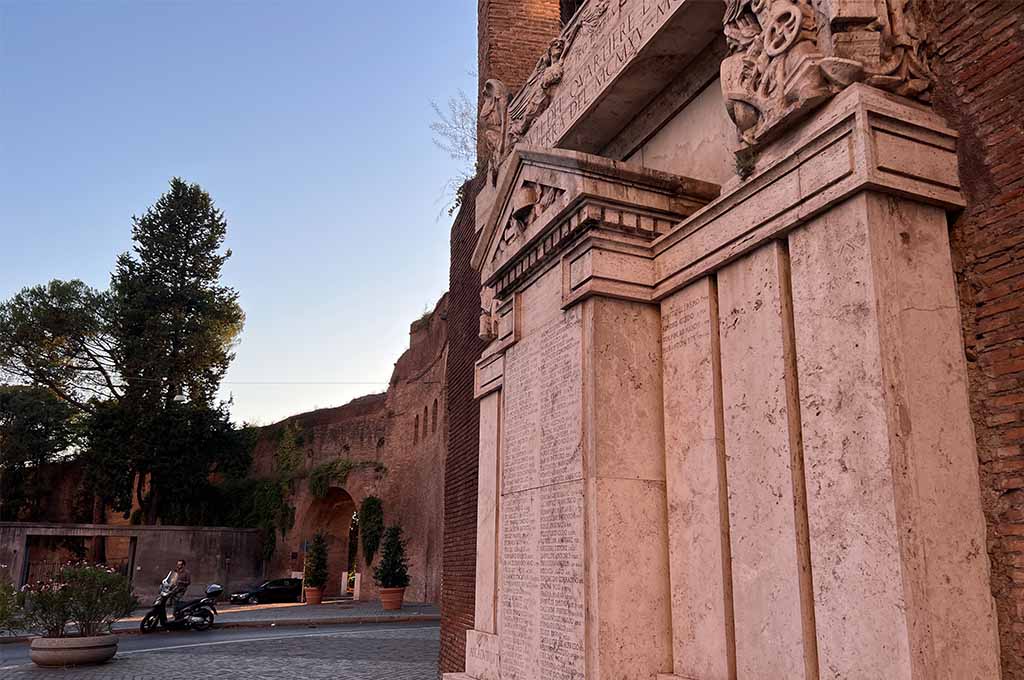
Baths of Caracalla
Located near the Circus Maximus in south Rome, you’ll find one of the largest thermal baths of the Roman Empire that help up to 1,600 people.
Built under Emperor Caracalla, the 11-hectare complex also had libraries, doctor offices, and sports areas.
Castel Sant’Angelo
Walk across the Ponte Sant’Angelo bridge and admire the 10 angles (made by Bernini) as you cross. The castle was built by Emperor Hadrian as a mausoleum.
Located on the right bank of the Tiber river and is a short walk from the Vatican. During the Middle Ages, the castle was used as a prison and played an important military role. It also was a refuge for popes.
Today, visitors can take a tour of the tombs and ancient apartments that the popes stayed in.
Catacombs of Rome
These underground burial chambers date back to the early Christian Era. Catacombs were once the burial place for Christians who were persecuted by the Roman Empire.
These popular tourist destinations are where you can see the remains of thousands of people. They are divided into several rooms with skeletal remains that have been used as decorations.
A few must-visit catacombs are:
- Catacombs of Priscilla
- Catacombs of San Callisto
- Catacombs of St. Callixtus
- Capuchin Crypt
Circus Maximus
What once was the largest stadium in ancient Rome, was a large oval-shaped racetrack that could hold up to 300,000 people.
Located between Aventine and the Palatine hills, once held gladiator fights and chariot races. Today, you can visit the remains, walk around or see a concert in the park.
Domus Aurea
Built by Emperor Nero, the ancient complex was a luxurious residence with monuments, baths, and multiple gardens.
Fontana della Barcaccia
This 17th-century baroque fountain is shaped like a ship I can find at the foot of the iconic Spanish Steps located on the Piazza di Spagna.
This is a good location to refill your water bottles with fresh spring water. This is a free site and a great photo opp. You will also find high end-shops, cafes, and gelato nearby.
Hadrian’s Villa
What has the main residence of Emperor Hadrian was built in 117 AD and is an architectural beauty.
Consists of palaces, fountains, baths, gardens, and other structures.
Largo di Torre Argentina
Located in the heart of the city are the ruins of the four oldest temples in Rome. It is also the site where Julius Caesar was assassinated in 44 BC.
Mausoleum of Augustus
Located on the Piazza Augusto Imperatore, is the largest circular tomb in the world that sits along the Tiber River. Octavian Augusts began constructing his tomb in 28 BC.
Ostia Antica
This was the site of the military seaport of ancient Rome. The remains date back to the 4th century BC. It was once home to over 100,000 people before its fall to the Roman Empire.
Palatine Hill
Known as the birthplace of Rome, once was the most desirable neighborhood in the city. This is where the rich built their homes and was located next to the Roman Forum. This is also the home where Augustus, the first Roman emperor built his home.
The Roman Forum and Palatine Hill are located next to the Colosseum. Your ticket to the Colosseum also gives you entrance to these sites.
According to the mythology legend, the city was founded by Remus and Romulus, the twin brothers who were rescued and raised by a she-wolf in a cave.
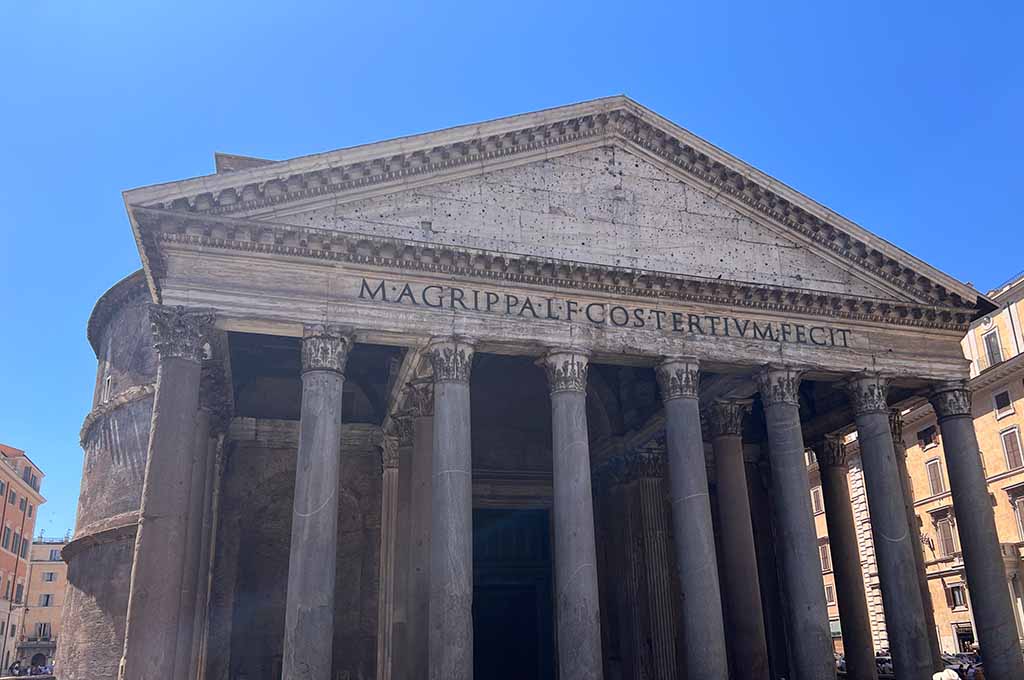
Pantheon
Built by Emperor Hadrian between 119 and 128 AD. The Pantheon is an architectural marvel with its concrete dome and marble floor. The dome is the world’s largest unreinforced concrete dome and is a site to be seen.
At the entrance, you will walk through the original bronze doors. It was originally built as a temple for deities of ancient mythology and then in the 7th century became a Christian Church.
The entrance is free and is located at the Piazza della Rotonda. There is typically a line to get in during busy months, but it moves quickly.
Parco dei Acquedotti
Park of the Aqueducts is located on the edge of Rome near Appian Way and is one of 11 aqueducts.
Piazza Navona
What was once the Stadium of Domitian, was the athletic area during the first century. The focal point at the piazza is Bernini’s Fountain of the Four Rivers which was built in 1651. There are also two other fountains—Fontana del Moro and Fountain of Neptune—that also showcase Baroque art.
The square is lined with restaurants and outdoor cafes. It’s a great place to people-watch and relax before more sightseeing.

Roman Colosseum
With over 7 million visitors a year, this is deemed the most popular attraction in Rome. The Colosseum still stands today despite part of the structure being destroyed in earthquakes, looting, and outdoor elements.
The Colosseum was completed in 80 AD and is the largest amphitheater built by the Roman Empire. The massive structure held up to 50,000 spectators.
The amphitheater was built so visitors could watch gladiator fights, animal hunts, and performances of ancient mythology.
Guests can enjoy views of the Colosseum from outside the arena and tour the inside. Part of the arena floor has been restored and you can view the underground level by taking a special tour or from any of the upper levels.
All visitors must purchase a ticket to visit the inside. Being a popular tourist attraction, it is best to purchase tickets in advance.

Roman Forum
Located next to the Roman Colosseum is the famous Roman Forum. This is the location of the original city center.
The first building on the site was the Senate (Curia) or the temple of Saturn, which was built in the 7th century BC.
The Roman Forum was where the ancient markets, businesses, and religious buildings were housed.
Santa Marie in Cosmedin
This church was made famous when Gregory Peck ”lost” his hand in its Bocca della Verità while entertaining Audrey Hepburn.
Santa Maria was built over a temple dedicated to Hercules Invictus.
Santa Maria Maggiore Basilica
A church was built on top of a temple and is the largest of the 26 churches in Rome named for the Virgin Mary.
This church features Christian art through the centuries. The dome ceiling is covered with gold that Columbus brought back from the New World.
READ NEXT: Best Coffee Shops Near You
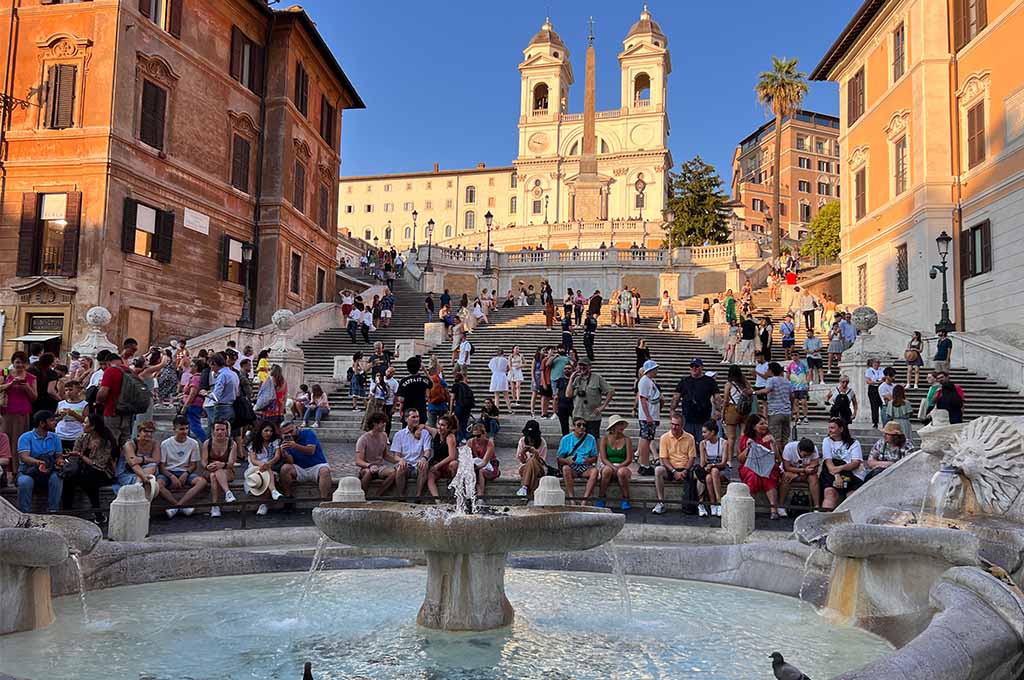
Spanish Steps
It was originally going to be built in 1559 to mark a peace treaty between France and Spain, but war broke out before construction began. It was later constructed in 1726.
The 138 marble steps connect the French church of Trinità dei Monti to the Piazza di Spagna at the bottom. The steps are one of the most photographed landmarks in Rome.
Piazza di Spagna is home to the Embassy of Spain and is the oldest embassy in the world.

St. Peter’s Basilica
This is the most well know religious landmark in Rome and was built in the 16th century. Located in Vatican City (which is inside Rome), is the largest basilica in the world.
The beautiful chapel is known for the famous dome designed by Michelangelo. Outside of the chapel is St. Peter’s square which is a great location for photos.
Guided tours of the Vatican museums and St. Peter’s last about 1.5 hours and can be booked online. This is one of the most popular destinations and getting same-day tickets are extremely challenging so it’s best to plan.
Before the entrance, you must have your knees and shoulders covered. If you are not dressed appropriately, guards will hand you a show that you can be used as a cover-up while in the basilica.
Of course, while visiting The Vatican and St. Peter’s Basilica, you have to take a few minutes to enjoy the Sistine Chapel. Although it was much smaller than I imagined, it’s beautiful and is a must-see.

Trajan’s Market & Trojan’s Forum
This semi-circular complex held 150 stores and offices as one of the first covered shopping malls in history.
Located next to Trajan’s Market is the Forum which was the largest imperial form built in Rome.
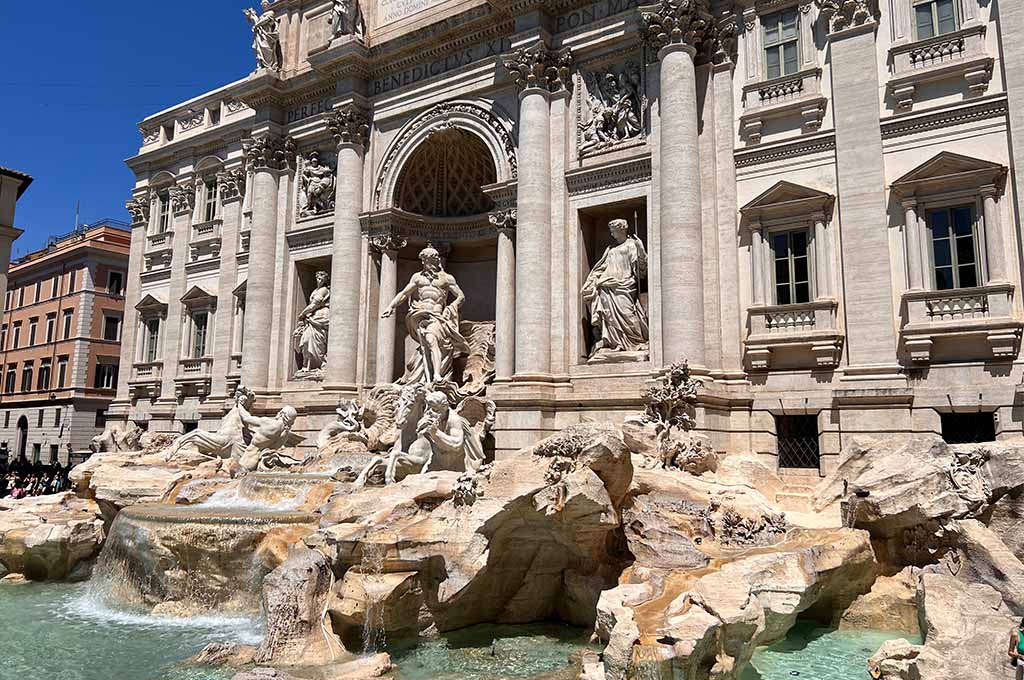
Trevi Fountain
This beautiful landmark spans 85 feet high and 160 feet wide. It was built with the same travertine stone used for the Colosseum.
Before leaving, you must throw a coin over your head and into the fountain. Tradition says that throwing the coin will bring you good luck and that you will return to Rome again.
The Trevi Fountain makes for a beautiful photo opportunity if you have the fountain to yourself. But you won’t! It’s incredibly crowded for the entire day and night. So if you are looking for the perfect Instagram-worthy photo, you need to arrive at first daylight to get the fountain to yourself.
READ NEXT: Best Road Trips for Families
Villa Borghese
Built by Scipione Borghese, patron of the painter Caravaggio and the sculptor Bernin.
These beautiful Italian gardens make up one of Europe’s largest urban parks. The park has multiple fountains and sculptures, making this a wonderful spot for a picnic.
With this complete guide to the best historical sites and most famous landmarks, you can start planning the ultimate trip to Rome.
